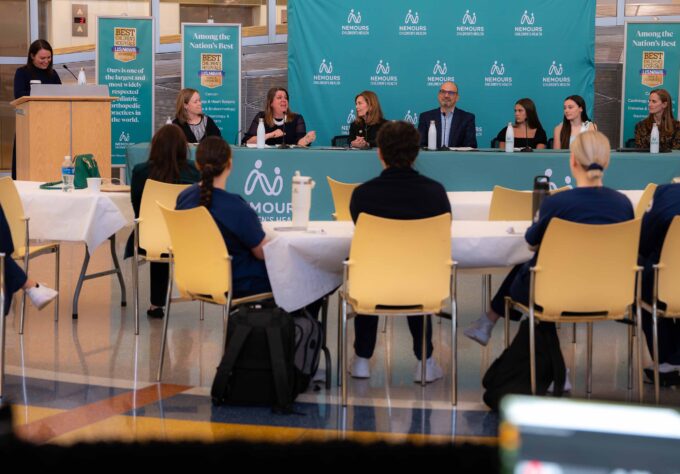Vitamins are nutrients that our bodies need to grow and live. There’s a cast of 13 and they all get top billing, yet Vitamin D is among the most important, especially among growing teenagers, for its starring role in bone health.
Why is Vitamin D So Vital?
During puberty, skeletal mass doubles. If teens don’t develop enough bone mass, they are at risk for osteoporosis (in which the bones become fragile and fracture easily) as they grow older.
Vitamin D helps the body absorb calcium and phosphorous from the foods we eat, and together they build bones and keep them strong. Break a leg? No worries! Vitamin D helps bones heal after an injury.
But Vitamin D is not only about bones; it’s busy doing other things, as well. Many of the body’s organs and tissues have receptors for Vitamin D, which explains why Vitamin D plays supporting roles in:
- Keeping the heart and muscles healthy.
- Protecting against respiratory viruses.
- Maintaining blood sugar.
- Promoting a healthy weight.
- Helping premenstrual syndrome (PMS) and menstrual cramps (dysmenorrhea).
- Lifting mood.
No wonder Vitamin D is called the sunshine vitamin.
What are the different forms of Vitamin D? Vitamin D2 (ergocalciferol) comes from plants and Vitamin D3 (cholecalciferol) is made by the skin from exposure to ultraviolet rays from sunlight. Vitamin D2 and D3 cannot be directly used by the body; first, the liver and kidneys convert them into forms that the body can use.
What foods contain Vitamin D? Good sources are mushrooms, egg yolks and fatty fish, such as salmon, tuna, herring, and sardines (surely a smash hit with teens). Some other foods fortified with Vitamin D include:
- Cow’s milk
- Soy milk
- Orange juice
- Oatmeal
- Cereal
How much Vitamin D do people need? Children older than 1 year need 600 units or more of vitamin D a day.
How can people get enough Vitamin D? Eating a diet rich in Vitamin D and spending several minutes outside in the sun is helpful. Sometimes the primary care provider (PCP) will recommend supplements. Lucky for all of us, there is no shortage of Vitamin D supplements including multivitamins, Vitamin D pills, chewables, liquids, and sprays. Vitamin D is also available in gummies, a definite favorite among kids.
What causes low Vitamin D? Vitamin D deficiency can result from too little sun exposure or inadequate dietary intake. Vitamin D deficiency is widespread: An estimated 10% of U.S. children are deficient and 60% may have suboptimal levels.
PCPs should screen their patients for Vitamin D deficiency in their diets and order blood tests for those at high risk. Vitamin D status is best assessed by measuring blood levels. Risk factors for Vitamin D insufficiency and deficiency include:
- Diets with inadequate Vitamin D.
- Obesity.
- Darker skin because darker skin synthesizes less Vitamin D from sun exposure than lighter skin.
- Certain medical conditions, including cystic fibrosis, diabetes, and some gastrointestinal diseases that interfere with absorption.
Is it possible to have too much of a good thing? Sadly, yes. Too much Vitamin D (more than 4,000 units a day) can lead to too much calcium being absorbed into the body, which can cause problems such as vomiting, nausea, stomach pain, fatigue, dizziness, confusion, excessive thirst, frequent urination, kidney damage, and, ironically, bone loss (go figure).
Our advice to parents: Take a 10 to 15 minute intermission from your busy day and sit in the sun with your teenagers. Also, enjoy a daily smoothie (made with milk, of course).
This article first appeared on Philly.com.



